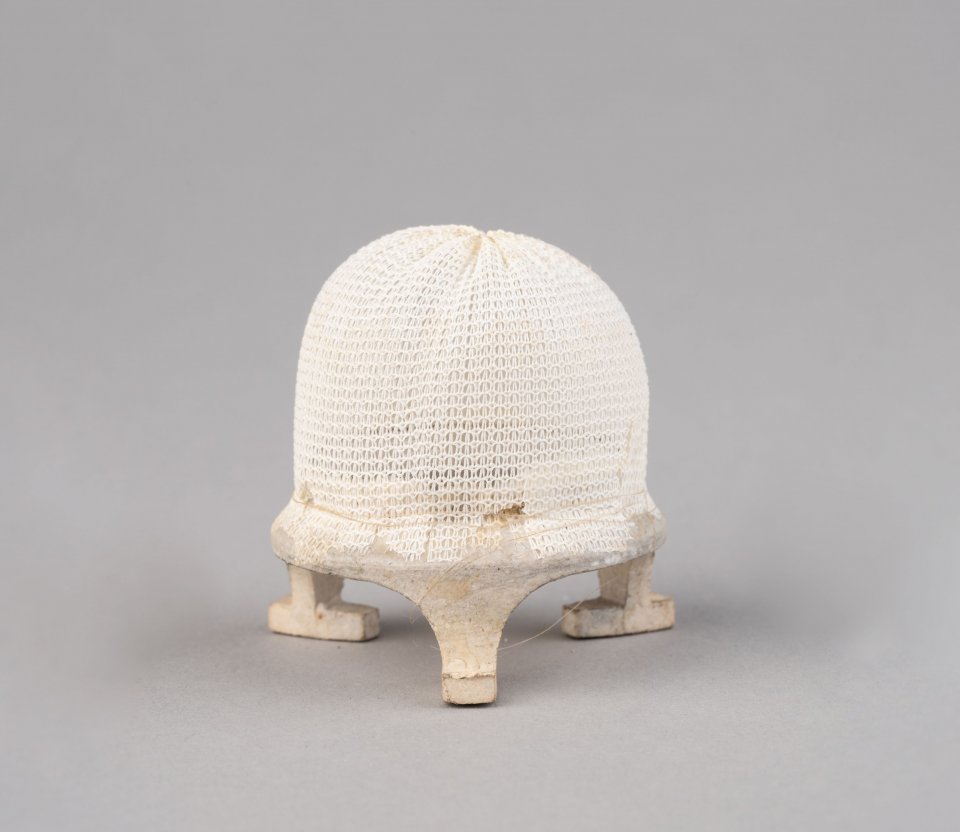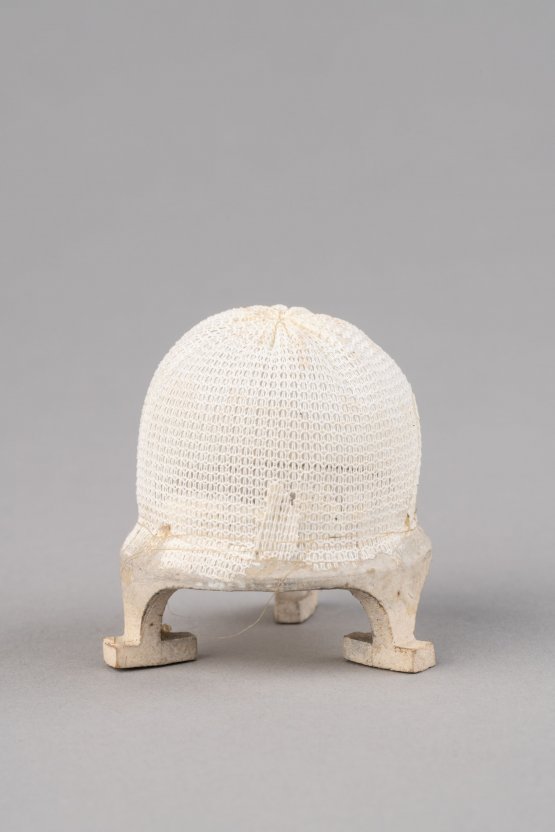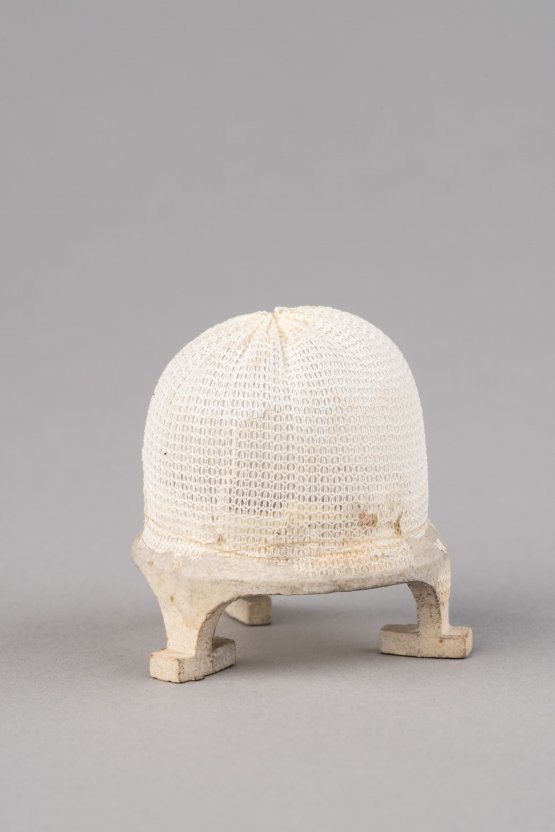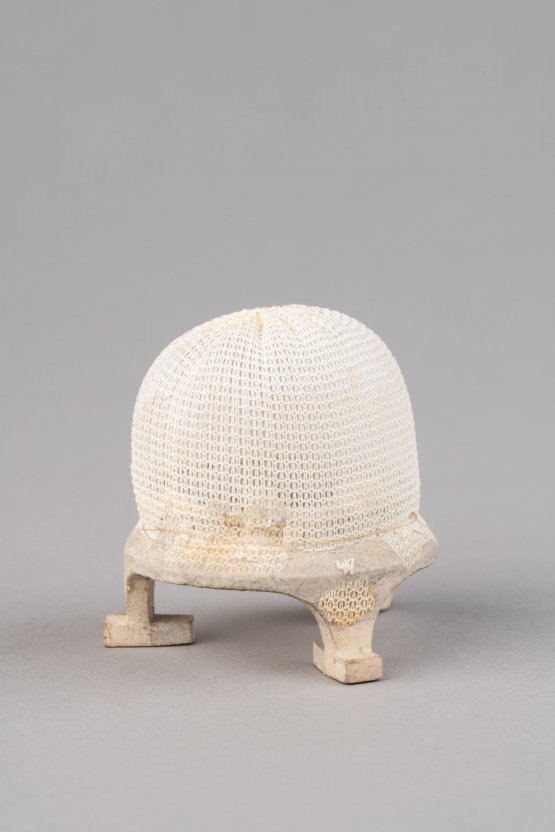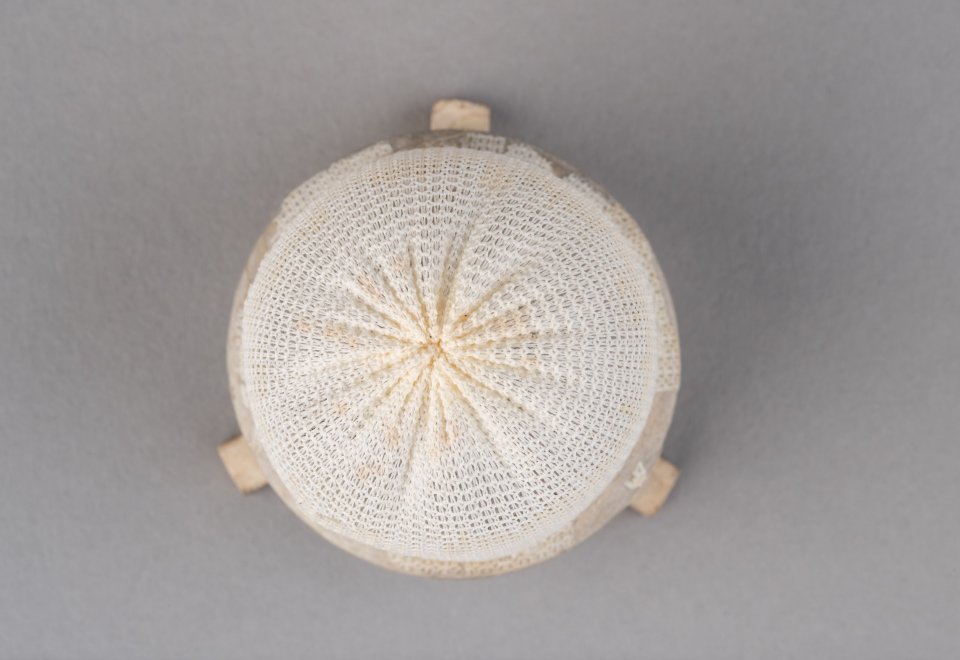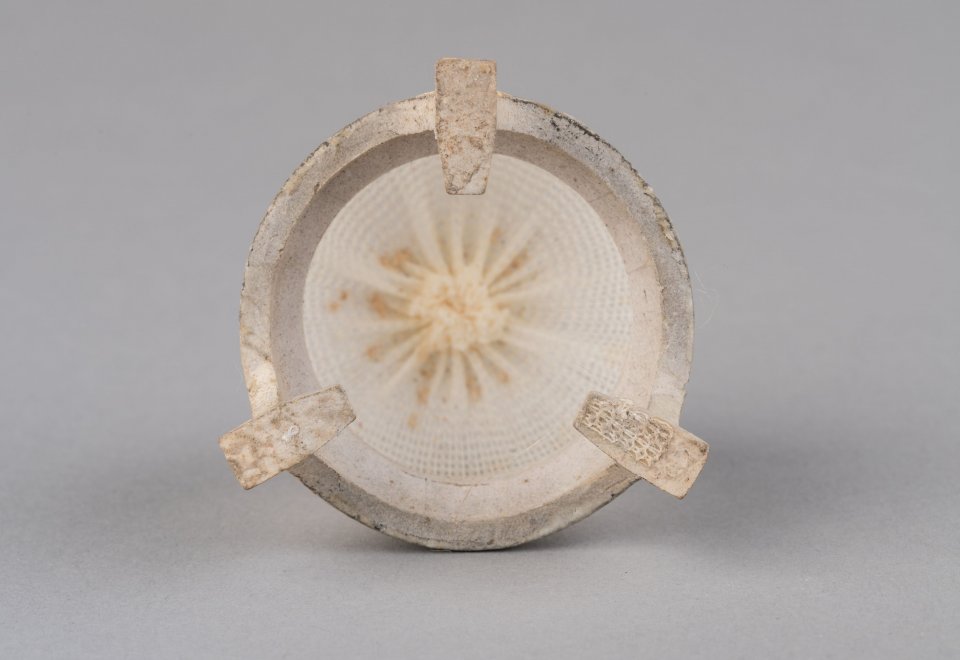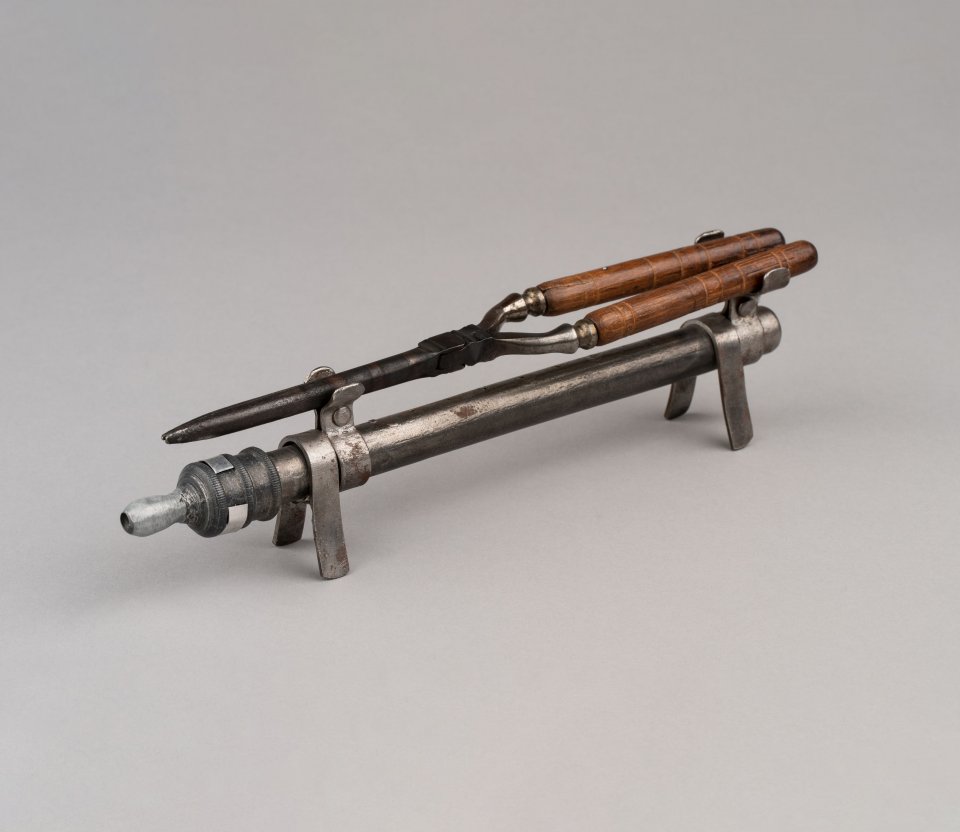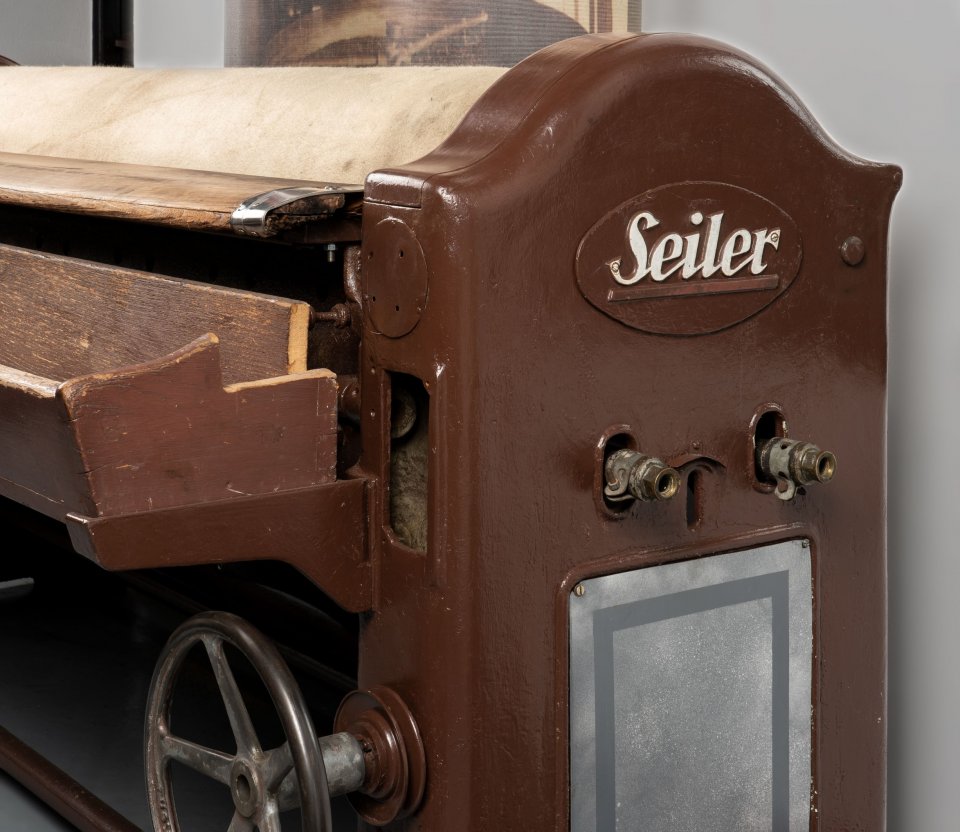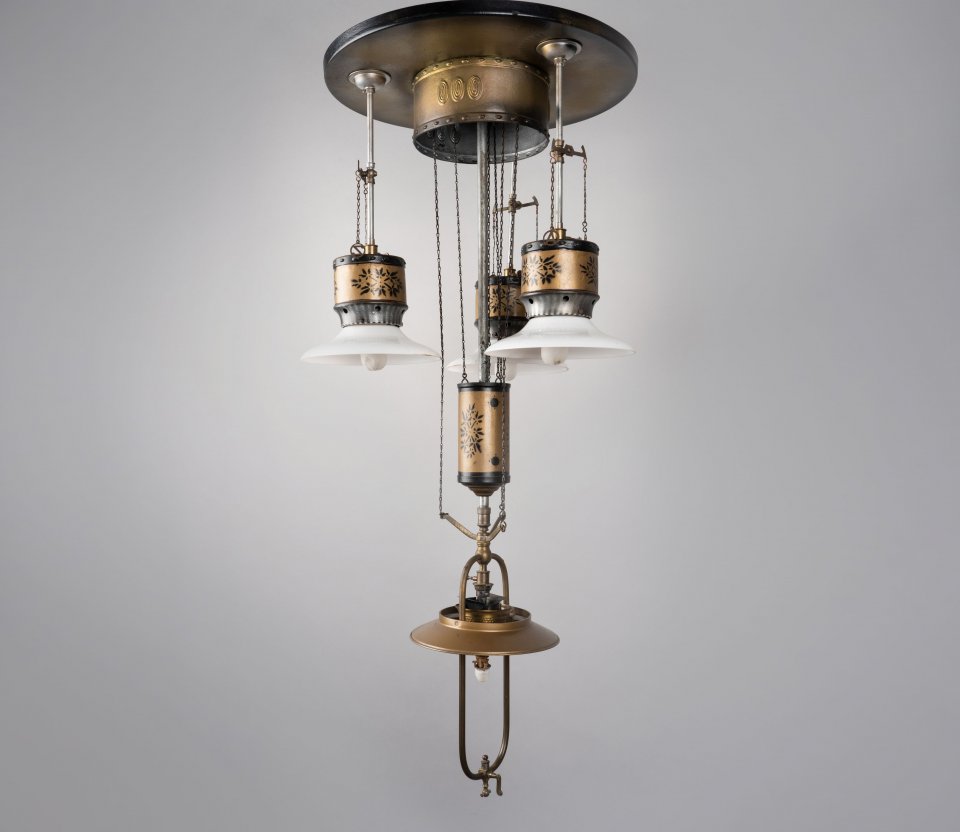Welsbach mantle
Category Lighting
Size
Height: 3 cm
Width: 3 cm
Depth 3 cm
Weight: 10 g
Material cotton, ceramics, chemical elements
Museum/Storage location Gasworks Museum in Paczków
Date of admission to the museum 1992
Rights to the exhibit Gasworks Museum in Paczków
Rights to digital images public domain
Tags
Exhibit description
This invention revolutionised how gas was used in towns and changed their colour at night.
Initially, municipal gas street lamps and domestic lamps gave a faint yellowish light. Thanks to the work of a Viennese scholar and pharmacist, the streets and the interiors of houses became illuminated with light of unparalleled intensity and colour.
Karl Auer von Welsbach worked at the University of Vienna, where he studied chemical elements. He discovered that some of them emit light when heated to high temperatures. Welsbach decided to put this phenomenon to use in his invention – he applied a mixture of thorium (99%) and cerium (1%) to cotton mesh in accurate proportions. When placed over a gas burner, this mesh began to give off a beautiful white light when heated. Because of its shape and the material used, this invention, which was as ground-breaking as the discovery of the LED, was also referred to as an incandescent gas mantle.
Initially, municipal gas street lamps and domestic lamps gave a faint yellowish light. Thanks to the work of a Viennese scholar and pharmacist, the streets and the interiors of houses became illuminated with light of unparalleled intensity and colour.
Karl Auer von Welsbach worked at the University of Vienna, where he studied chemical elements. He discovered that some of them emit light when heated to high temperatures. Welsbach decided to put this phenomenon to use in his invention – he applied a mixture of thorium (99%) and cerium (1%) to cotton mesh in accurate proportions. When placed over a gas burner, this mesh began to give off a beautiful white light when heated. Because of its shape and the material used, this invention, which was as ground-breaking as the discovery of the LED, was also referred to as an incandescent gas mantle.
